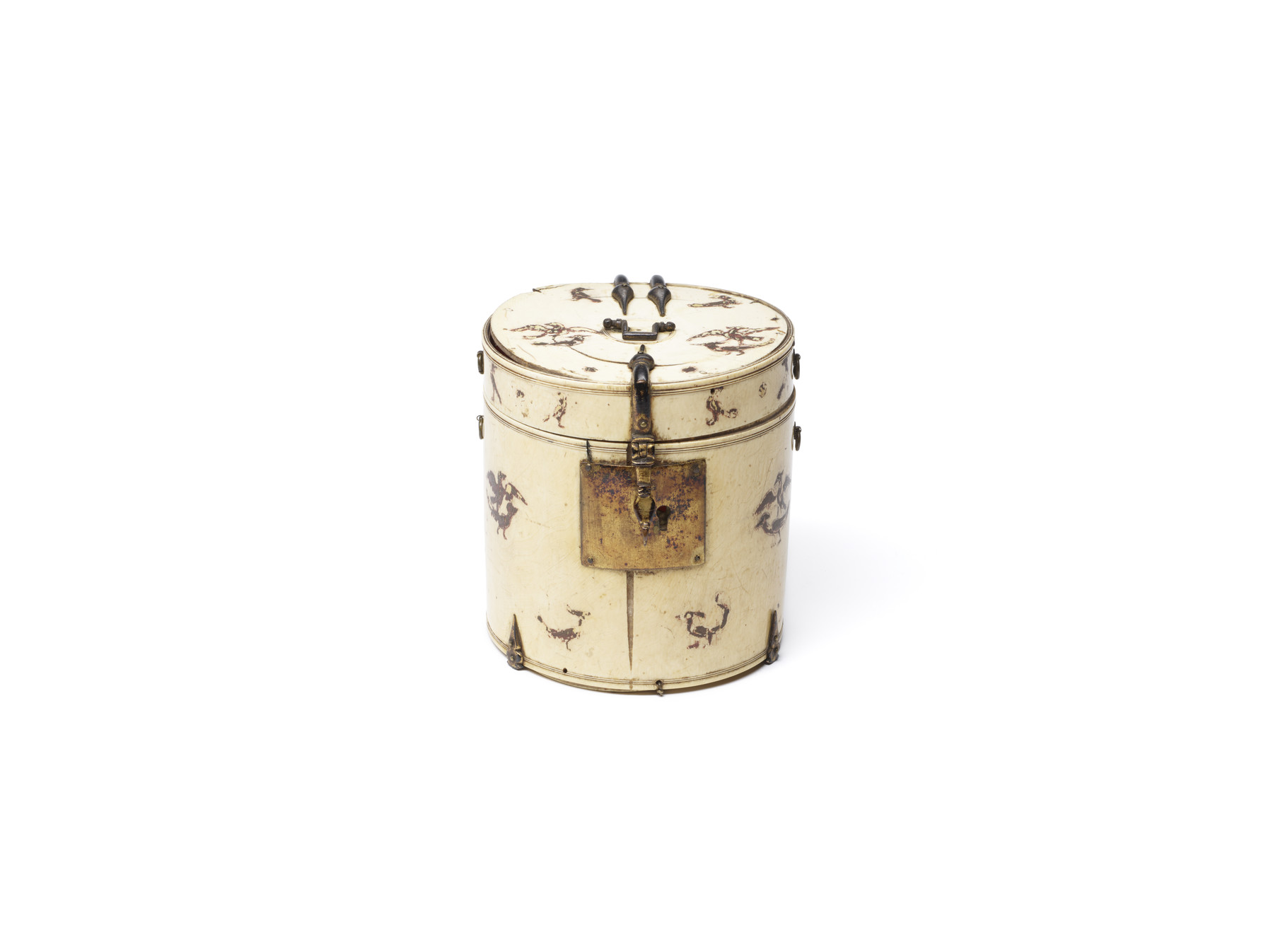Box (Pyx)
(Medieval Europe , Islamic World )
This ivory object, along with others in the Walters collection, were created by Muslim craftsmen, probably working in Palermo, Sicily, for the Christian court of the Norman rulers (11th-13th century) and were intended for personal use as containers for perfumes, cosmetics, and jewelry. Many such small boxes and coffers, decorated with typically Islamic motifs such as birds, animals, and geometric designs, eventually ended up in Europe and took on a Christian function. They were often placed on church altars to hold the Host (Communion wafer) for the Mass and sometimes were even transformed into reliquaries to contain the remains of saints. Preserved in church treasuries, these examples of secular Islamic art were admired and copied by European artists making Christian liturgical vessels.
Provenance
Provenance (from the French provenir, 'to come from/forth') is the chronology of the ownership, custody, or location of a historical object. Learn more about provenance at the Walters.
Count Grigori Strogonoff, Rome; Elia Volpi, Florence [date and mode of acquisition unknown]; Elia Volpi Sale, Florence, 1916, no. 3; Henry Walters, Baltimore, 1916 (?), by purchase; Walters Art Museum, 1931, by bequest.
Conservation
| Date | Description | Narrative |
|---|---|---|
| 1/11/1962 | Treatment | cleaned |
| 9/1/2001 | Treatment | cleaned |
Geographies
Italy, Palermo (Place of Origin)
Measurements
H: 5 1/8 x W: 4 1/2 in. (13 x 11.5 cm)
Credit Line
Acquired by Henry Walters, 1916 (?)
Location in Museum
Not on view
Accession Number
In libraries, galleries, museums, and archives, an accession number is a unique identifier assigned to each object in the collection.
In libraries, galleries, museums, and archives, an accession number is a unique identifier assigned to each object in the collection.
71.308










